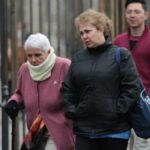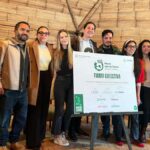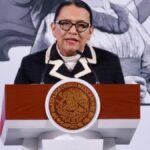Distinguishing Between Being Born Blind and Becoming Blind
Being born blind and becoming blind are two distinct experiences, each shaping a person’s life in unique ways. Born-blind individuals carry the weight of their social destiny from infancy, often becoming symbols of difference and, in many contexts, wisdom. Those who become blind experience a disruption in their visual biography, losing a familiar way of relating to the world. In both cases, blindness transcends its physiological nature, becoming a vital trajectory: identity for the former and a painful transition for the latter.
Historical Perspective
Throughout history, blindness has been one of the most visible forms of bodily difference, noticeable to others rather than the individual experiencing it. This paradox has accompanied the lives of blind people long before modern concepts of disability or human rights emerged. Unlike lepers, lunatics, or epileptics, who were often excluded and segregated, blind people have historically been integrated into societies as storytellers, musicians, poets, or wise figures.
Their blindness was not seen as a threat but rather as a symbol of fragility, intuition, or depth. Figures like Tiresias in Greece, Homer as a poet, blind singers in the Islamic and African worlds, and storytellers in Mesoamerican cultures occupied visible, functional, and respected positions.
Medicalization of Blindness
With the advent of modern medicine, blindness began to be treated as a technical problem. Special schools were established, such as those founded by Valentin Haüy and later Louis Braille, and numerous charity institutions multiplied. Policies of correction were implemented, transforming blind individuals from social figures into objects of intervention.
The invention of Braille was an act of emancipation within confinement, enabling reading and writing while simultaneously initiating a separation. Blind individuals were educated in separate spaces, treated as exceptions, and rehabilitated in the name of normality. The medical gaze transformed blindness into a diagnosis, experience into deficiency, and the body into an archive of deviations. The blind person became a patient, later a user.
Epidemiological Transition
Historically, infectious diseases were the most common cause of blindness. Trachoma, for instance, blinded millions in Africa, Asia, and the Middle East. Today, however, chronic and degenerative conditions like cataracts (linked to aging) and diabetic retinopathy (associated with lifestyle changes and the global expansion of diabetes) predominate, reminding us that each era produces its own forms of losing sight.
Social Implications
Although blindness is not directly fatal, epidemiological studies show that people who are blind or have severe visual impairment face a higher risk of death from any cause. This is not due to sensory loss but rather structural factors: falls, inactivity, limited access to services, social isolation, and difficulty managing other illnesses. In essence, societal structures create vulnerability, and blindness can become existential erasure in such an environment.
The Critical Genealogy of Blindness
A turning point in the critical genealogy of blindness is when blind individuals claim their voice. Figures like Jorge Luis Borges, John Hull, Jacques Lusseyran, Georgina Kleege, Haben Girma, Sabriye Tenberken, and María del Carmen Ponce challenge compassionate discourses and present life built on difference.
Borges highlights that the tragedy lies not in being blind but in being blind among those who can see. Hull describes blindness as an ontological condition, not a loss. Girma demands rights as a black, female, and deafblind woman. Ponce exposes the control mechanisms over the bodies of blind women in Mexico, demonstrating that invisibility is compounded by gender-based violence regulating their bodies, desires, and decision-making possibilities.
Blindness as a Privilege of Perspective
Western culture has privileged sight as the primary sense, associating it with knowledge, control, and domination. In this framework, blindness appears as a deficiency. However, narratives from blind individuals reveal that one can know, love, move, create, and resist without sight. Vision is not the only way to exist in the world.
From a Foucauldian perspective, blindness is not merely a physiological condition but a position within the apparatus of visibility. The blind person is seen, named, assisted, and corrected. Yet, through speech, writing, and action, they detach from the object position and become a subject of knowledge. They don’t need others to see for them; they need others to stop viewing them as deficient.
Contextual Variations
Experiences of blindness vary significantly across cultures. While the body remains constant, its environment changes drastically. Some places still condemn blindness to confinement, beggary, or abandonment. Others enable technologies, rights, and autonomy for the blind body, which is not a natural fact but a field of historical and political possibilities.
Equity and Autonomy
Equity does not mean making the blind see; it means ensuring that those who don’t see can live independently, with or without a cane, Braille, real access to education, desire, street presence, and opinion.
Globally, blind people have formed networks, associations, and movements fighting for their right to live without intermediaries. It’s not just about inclusion but autonomy. As Rosemarie Garland-Thomson notes, social stigma weighs as heavily as physiology: it’s not the lack of vision but how others look at and name those who don’t see.
Looking from the Shadows
Blindness has been visible but rarely heard. It has been represented, seldom narrated from within. Today, those who live without sight compel us to see differently: not to return light but to deconstruct the privileges of those who possess it. It’s not about pity or correction but about stopping the deficit-oriented thinking of difference.
References
Garland-Thomson, R. (2009). Staring: How we look. Oxford University Press.
Kleege, G. (1999). Sight unseen. Yale University Press.
Resnikoff, S., Pascolini, D., Etya’ale, D., Kocur, I., Pararajasegaram, R., Pokharel, G. P., & Mariotti, S. P. (2004). Global data on visual impairment in the year 2002. Bulletin of the World Health Organization, 82(11), 844–851.
Taylor, H. R. (2008). Trachoma: A blinding scourge from the Bronze Age to the twenty-first century. Centre for Eye Research Australia
*Profesor Titular del Dpto. de Salud Pública, Facultad de Medicina, UNAM y Profesor Emérito del Dpto. de Ciencias de la Medición de la Salud, Universidad de Washington.
The opinions expressed in this article do not represent the position of the institutions where the author works.
[email protected]; [email protected]; @DrRafaelLozano






